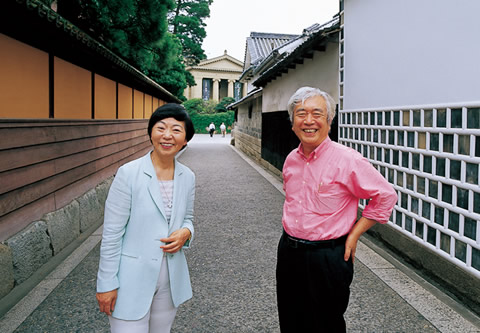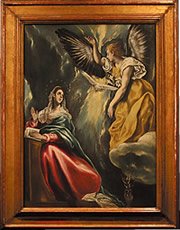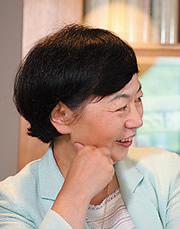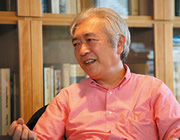Dialogue
The starting point nurtured by the community
21st century culture created by small town people


The Annunciation by El Greco, circa 1590-1603
This painting is a symbol of the Ohara Museum of Art. (Nakamura)
The personal taste of Kojima is seen in every work. The starting point is clearly in focus.(Ohara)
Kurashiki is a nice town-a blend of the old and the new. It seems to be a place well lived-in. It is different from other towns, with just a lot of people milling about. Mr. Ohara calls that the culture of the small town people. He speaks of the joy of creating fun as the town changes yet continues steadily on its way. The Ohara Museum of Art is at the core of that process. The Meiji period left that legacy to us, and I sincerely hope we leave that same legacy for people of the future to enjoy.
(Keiko Nakamura)
Nakamura --
The Ohara Museum of Art has dealt first with the things that should be done in the 21st century. The basis is the relationship of trust between Magosaburo Ohara and painter Torajiro Kojima, though he did not exclude the outside world and learned about Europe as a painting. It has the view of the community, culture, and history.
Ohara --
Magosaburo later supported the folk art movement, and his son Soichiro commissioned some woodblock prints from Shiko Munakata and displayed them at the Toyama materials factory. His intent was to reward a powerful factory behind the scenes and contribute to vinylon development.

Nakamura --
The ideas and history of each person involved with the individual works are apparent. One can also see their own involvement in this. I want to have the Biohistory Journal continue to cover this.
Ohara --
Japan has a samurai culture and a townspeople culture, and the latter is stronger in the western part of Japan. Townspeople are the starting point for the culture, and their starting point is the community. That's why I make a point of emphasizing this town.
Nakamura --
If culture is valuing the quotidian and thinking about its relationship to the community, while incorporating the greater world in your perspective, then Mr. Ohara was the pioneer, and we have a lot of work to do to catch up.
After the dialogue

Born in 1940, he graduated with a degree in economics from the University of Tokyo, and was awarded a doctorate from Yale University in the United States. He has served as the vice-president of Kuraray and vice-president of the Chugoku Bank. Today, he is the director of the Ohara Museum of Art and lectures on non-profit organizations as a visiting professor at Kurashiki University of Science and the Arts. He also serves as a director of the Kurashiki Central Hospital, the chair of the Kurashiki Chamber of Commerce and Industry, a member of the Okayama Board of Education, and the chairman of the Okayama Prefecture Culture Federation. He has written the book "Here's How It Looks from Kurashiki: The world, culture, and outlying regions" as part of his work to disseminate local culture worldwide.
- Dialogue:The starting point nurtured by the community
Kenichiro Ohara / Keiko Nakamura - Research01:The cell walls of Trebouxiophyceae generate a diversity of cellular division
Maki Yamamoto / Shigeyuki Kawano - Research02:The new culture created by changes in the land
Seiichiro Tsuji - Scientist Library:From a cell to an individual organism
Masatoshi Takeichi
|
|